Exploring Google Meet for Teleconferencing
The importance of video conferencing software has increased exponentially in the past couple of years, and one of the best options around is Google Meet. The software replaces previous products like Duo and Hangouts Meet, but it works slightly differently and has special features for more advanced users.
So how do you use Google Meet, and what special features does it offer? Keep reading for a comprehensive primer, plus a few recommendations for Chrome extensions to make the experience even better.
QUICK ANSWER
To use Google Meet, sign in to your Google account and go to meet.google.com. You can invite others to a meeting room or attend a meeting set up by someone else. All you need is a microphone and an optional webcam. Meet is also integrated into other Google products, such as Gmail and Google Office.
JUMP TO KEY SECTIONS
- What is Google Meet?
- Is Google Meet free?
- How to use Google Meet
- Google Meet Chrome extensions
- Google Meet hardware
What is Google Meet?
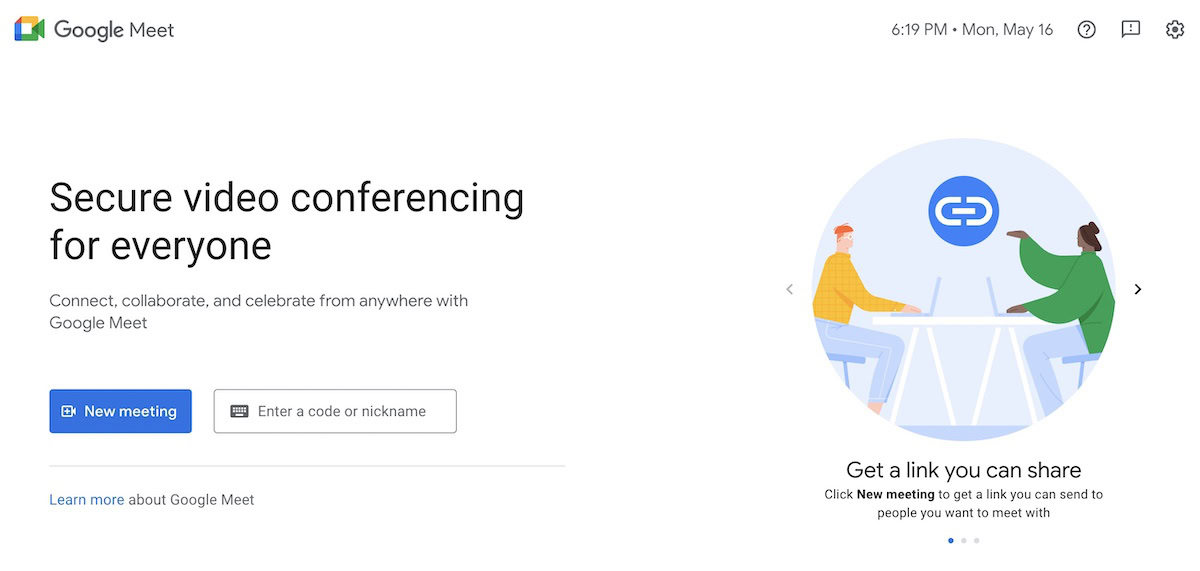
Google Meet (previously called Google Hangouts Meet), is a business-focused video conferencing tool developed by Google. Along with Google Chat, it replaces Google Hangouts video chats and adds some features for enterprise use.
Those enterprise features are great for small and large businesses, but Google Meet is also a popular option for schools. Since many school districts in the US have already invested in Chromebooks and Google Workspace (formerly G Suite) apps, Meet is a natural fit that covers most classroom needs natively.
After spending the better part of a year completely overshadowed by Zoom, Google Meet unlocked many paid features for free users during the coronavirus stay-at-home order, which made it surge in popularity. It still doesn’t have as large a user base as some of its competitors, but it is still growing and adding features.
Is Google Meet free?
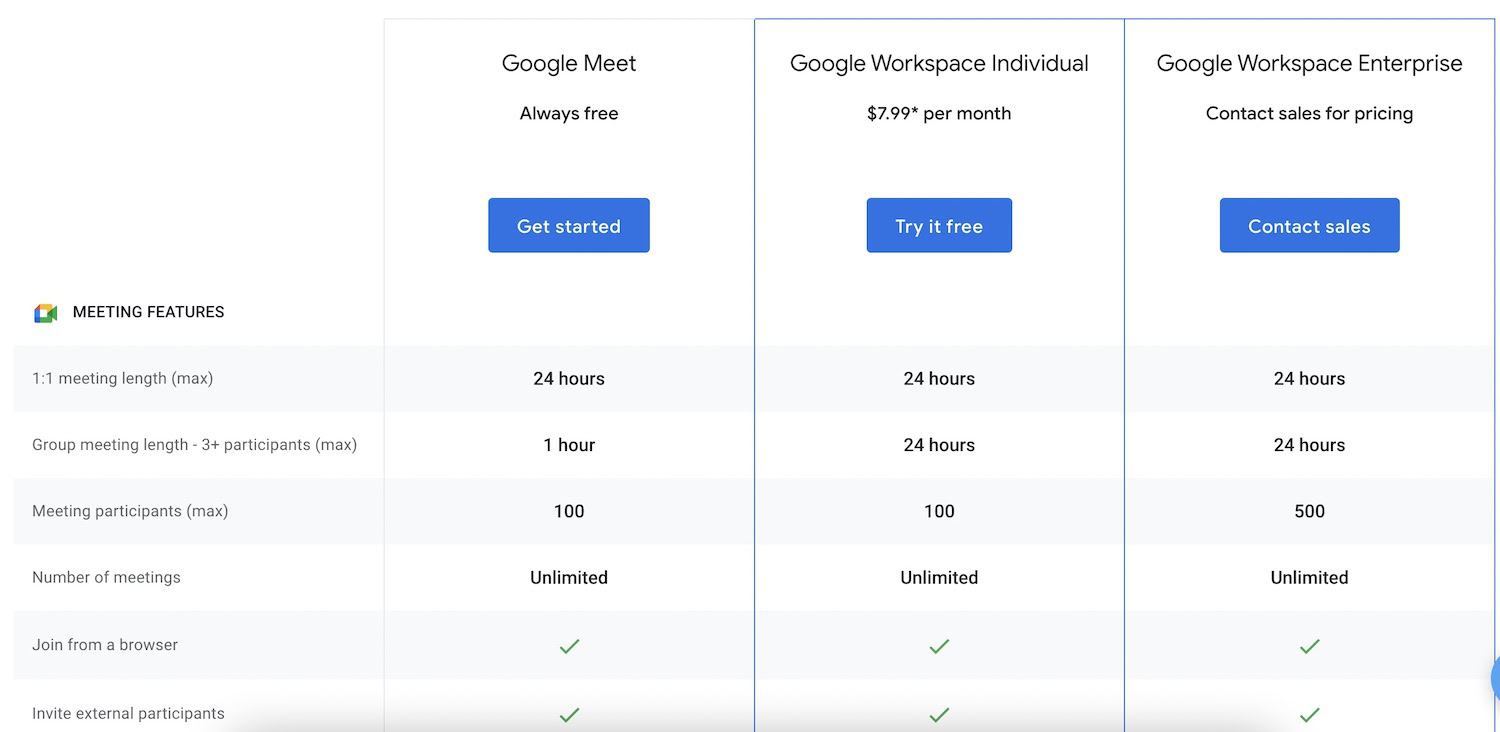
Google Meet is free for everyone, but with limitations. For free users, meeting durations are limited to one hour, with a maximum of 100 participants. 1:1 meetings are also extended to 24 hours maximum, which is great news for families looking for a Skype alternative.
For Google Workspace Individual users, those limits are bumped up considerably. Meeting durations jump up to 24 hours with 100 participants. It also adds several useful business features, like saving meeting recordings to Google Drive, domestic and international call-ins, and 24/7 customer support.
Google Workspace Enterprise users get even more, with the same 24-hour meeting limit but with a maximum of 500 participants. Other great features like intelligent noise cancelation and a host of security features are also added.
How to use Google Meet
The good news for those switching from WebEx or Zoom is that Meet is very easy to use. Like most Google Workspace apps, it’s designed for simplicity, and you can learn how to use Google Meet in less than an hour.
We’ve broken down the main things you need to know below, from starting or joining a meeting to sharing your screen or other resources.
How to start or join a meeting
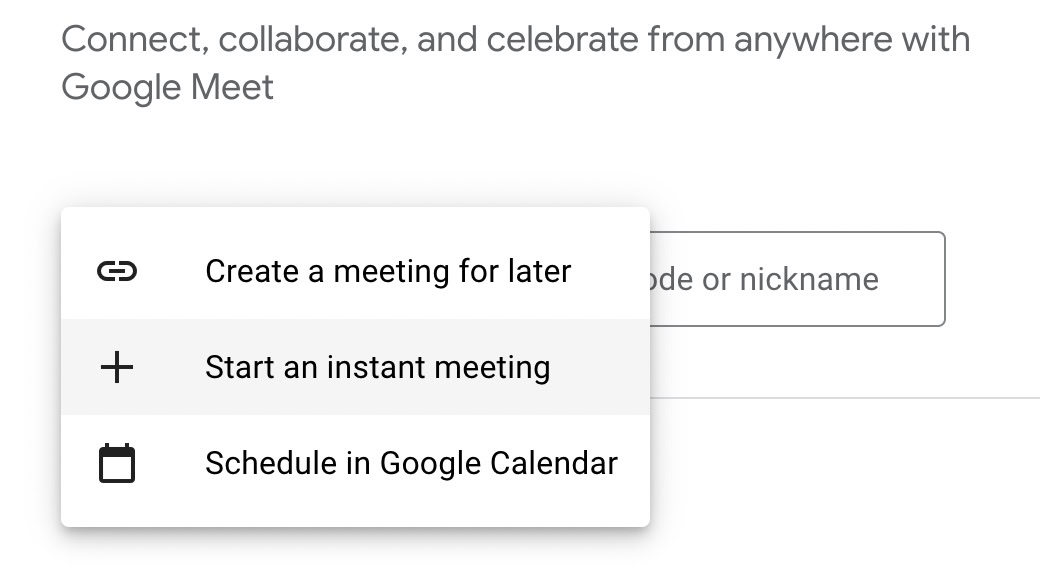
The first thing you need to learn how to do is how to start a meeting, and thankfully with Google Meet, it’s easy as can be. All you need is a Google account and internet access.
Here are all the ways to start a meeting from different devices:
- Browser: Go to https://meet.google.com/ and click New Meeting, then follow the steps to set one up.
- Gmail: Click Start a Meeting from the menu on the left (browser only)
- Smartphone: Download and open the Google Meet app, then click New Meeting.
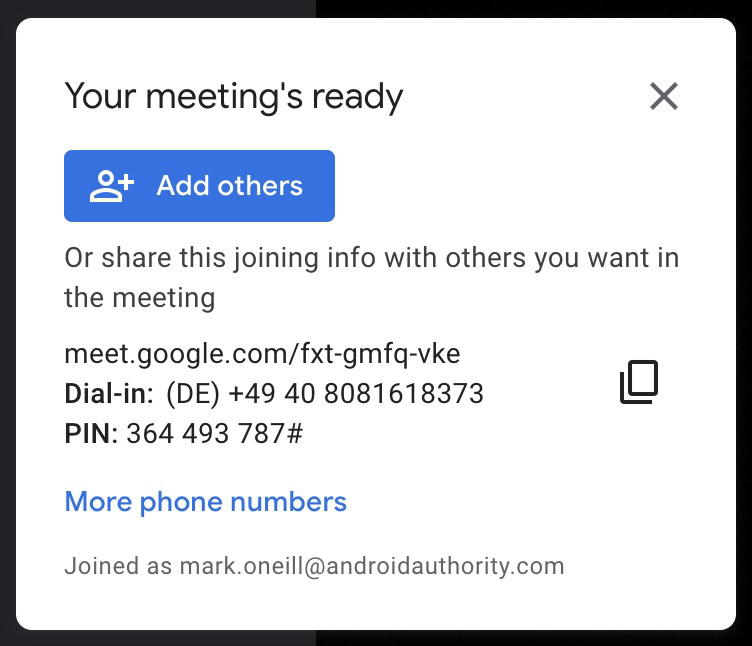
When starting a meeting, you will automatically generate a link for other participants to join. All you need to do is send them the link, and they can join immediately. Links will also be sent to anyone who is invited to a meeting event that’s been scheduled in Google Calendar or Gmail. Participants may need to be accepted to the meeting by the host, so keep an eye out for notifications.
Joining a meeting is even easier than starting one. In each of the places listed above, there is an option to Join Meeting right next to the option to start one. You can enter the meeting code there, or just click the link sent over by the meeting host. It’s really that easy.
Customizing your settings

Once you’ve created or joined your meeting, it’s time to learn how to use Google Meet settings and customization features. Which features are available depends on whether or not you have a paying Google Workspace account, but there are many things you can do with a free account too.
One of the most important settings for video conferences is how you display the participants. By default, it’s set to Auto and will automatically choose the best layout depending on how many participants there are and how many people are talking.
Other display options
- Tiled: Shows up to 16 participants in small tiles, or fewer participants in a sidebar if someone is presenting.
- Spotlight: The presentation or active speaker fills the window.
- Sidebar: The presentation or active speaker is in the middle, with smaller tiles on the side for other participants.
Apart from this, you can also pin a participant, so they always appear in the center of your screen. Meeting creators can also mute participants, which works independently from self-mutes. For privacy reasons, no one except the participant themselves can unmute their own mic if self-muted. Call-in participants can mute or unmute themselves by entering *6 on the dial pad.
Read also: How to cast a Google Meet using a Chromecast
Live captioning
One of the coolest features of Google Meet is live captioning. Just hit the Turn on captions button at the bottom of the screen, and Google will generate closed captions for whoever is speaking. It’s included in the free plan as well, so anyone can use it. Note that this is currently only available in English, and the captions don’t get saved if the meeting is recorded.
How to present and chat in Google Meet
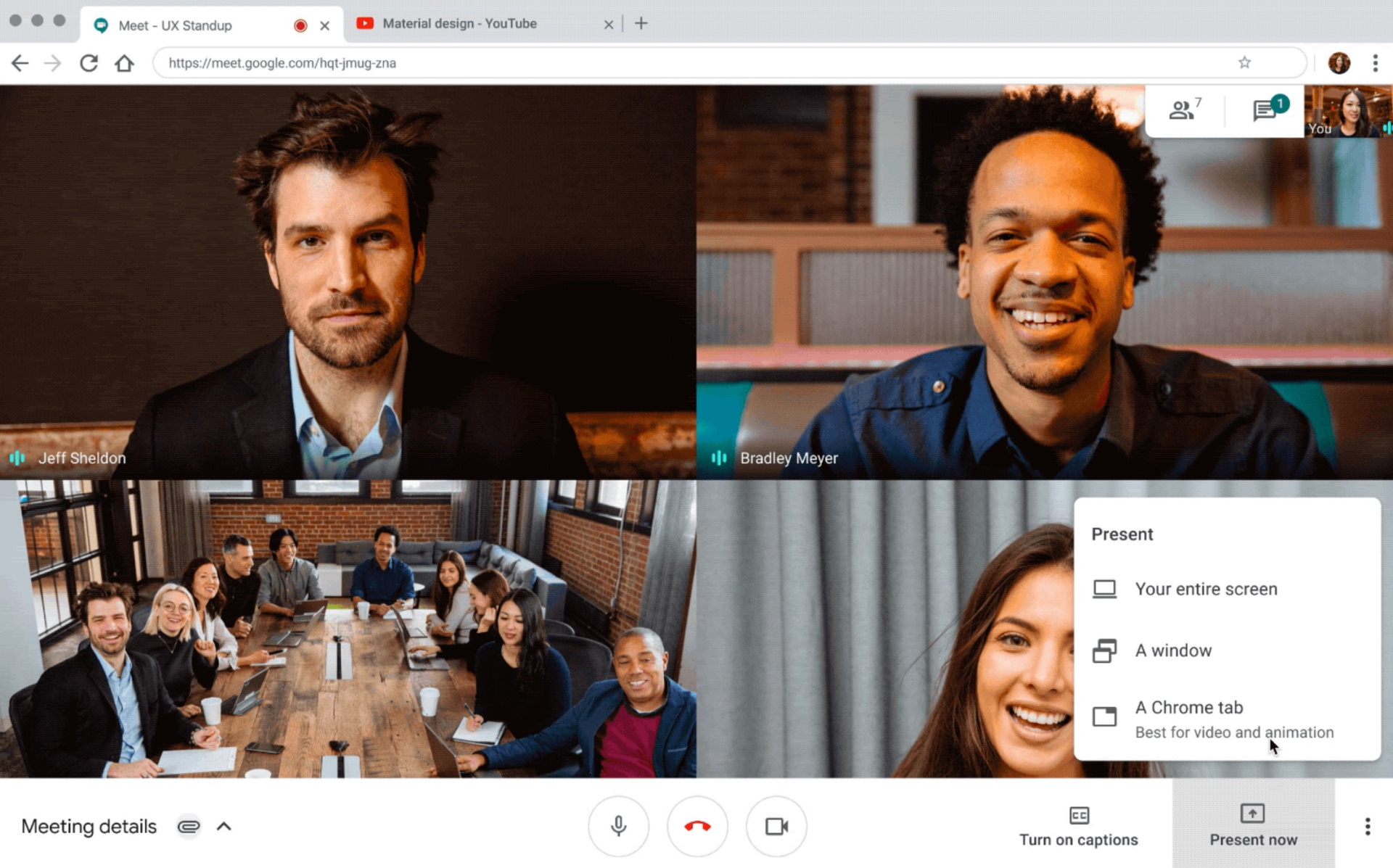
Video meetings are a great way to communicate with colleagues, but at some point, you’ll need to present something. Like most video conferencing software, it’s fairly easy to learn how to use Google Meet for presentations, and it has a few extra options thanks to its integration with Chrome.
Read also: 20 Chrome tips and tricks you should know about
Sharing your screen
To share your screen, all you need to do is click the Present Now button at the bottom of the screen. You can then choose to share your entire screen, a single window, or a single Chrome tab. If you want to show video or animation, Google recommends sharing just a Chrome tab for the best performance.
You can swap to a different Chrome tab by clicking Change source at the bottom of the page, or stop sharing by clicking Stop presenting.
If you don’t want to share your screen or interrupt the presentation by speaking, you can also take advantage of the chat option. Just click the small chat icon in the upper right, enter your message, and click send. This is a great way to enter questions for a Q&A session or share links to Google Docs for meeting notes or other resources.
Google Meet Chrome extensions
Google Meet has many great built-in features, but you can get even more done by installing a few Chrome Extensions. Obviously, this only works on Google Chrome, but if you’re using Meet from a Chromebook, laptop, or desktop, this is probably how you’re using the platform anyway.
Google Meet Enhancement Suite
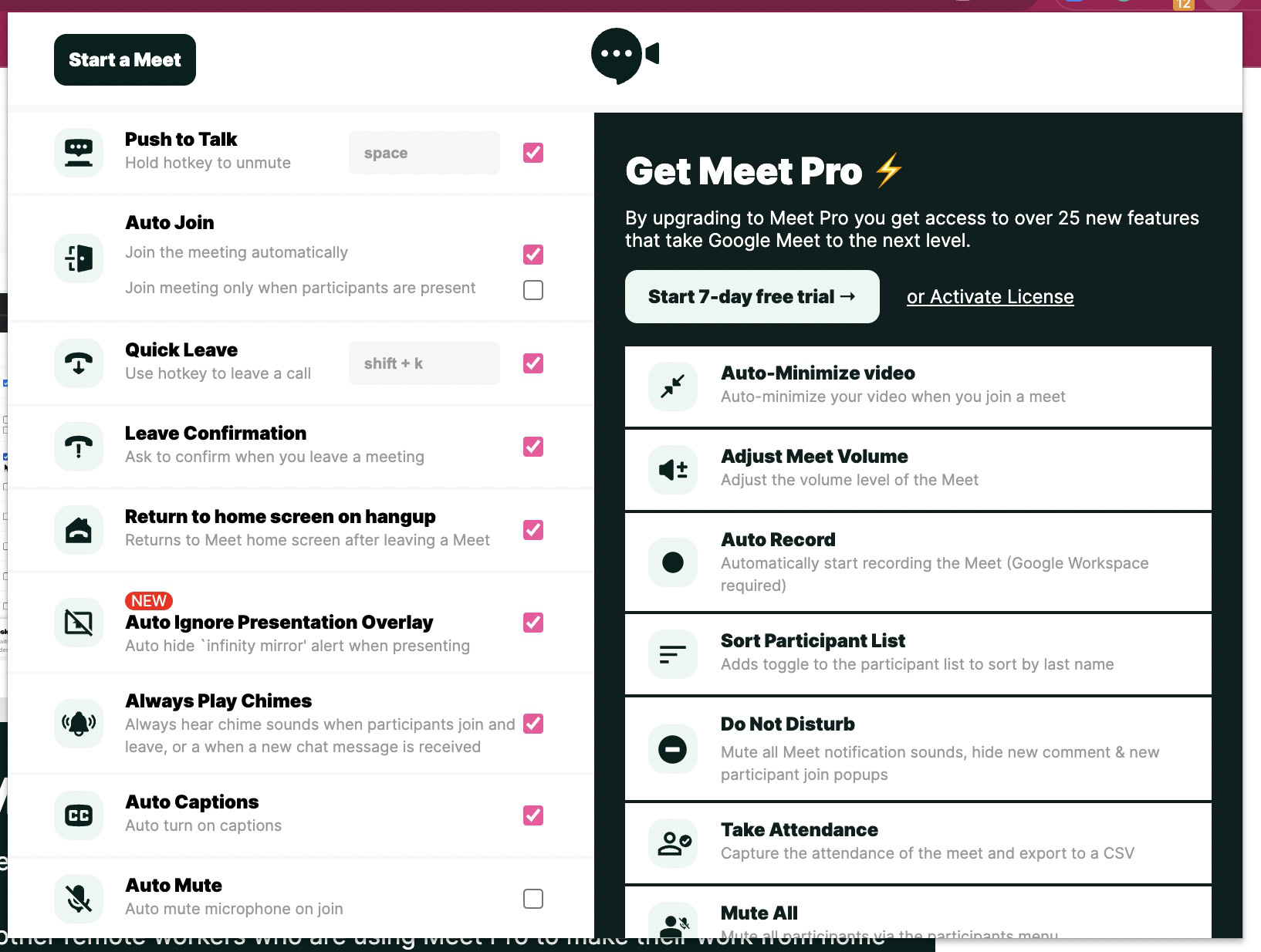
One of our favorites is Google Meet Enhancement Suite, which adds lots more features to the platform. The free version includes options for push-to-talk, auto-muting, quick leave shortcuts, and more. There is a paid “Pro” version with other great features like picture-in-picture and an all-mute button.
If you don’t need so many features, another great option is Google Meet Push To Talk. It makes it so that pressing the spacebar will unmute your mic, so you don’t have to worry about embarrassing yourself in front of colleagues or classmates. Meet Mute does something similar but is a bit more cumbersome to set up.
Breakout Rooms

One more great extension for classrooms is Google Meet Breakout Rooms. It allows you to use the popular Zoom feature Breakout Rooms, which sets up separate meetings for smaller groups. The service has since added this feature for nearly all paying Google Workspace users (including education plans), but everyone else can still use the extension.
Google Meet hardware
Google Meet is relatively new, but there are already several products on the market designed specifically for the program. They are intended to be used in a proper meeting room, so they’re aimed primarily at businesses and carry a price tag to match.
The first dedicated Meet hardware was released by Asus back in May and features several devices for the meeting room. There’s a basic Chrome OS computer system to run the calls, a touchscreen or remote to control them, an ultrawide UHD camera, and a speaker mic. These kits run for $2,000 or more, depending on the setup you need.
Series One
Google has also released its own Meet hardware called Series One, which can be seen in the video above. Made in partnership with Lenovo, the lineup includes a basic computer system, a smart soundbar, a 4K camera capable of panning and zooming, a touch control display and remote, and mic pods.
Credit: www.androidauthority.com

